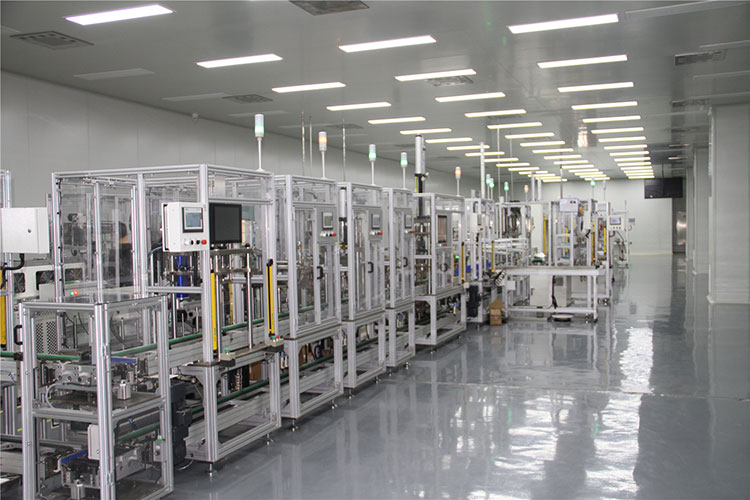Why Is a Brushless Motor Production Line Essential for Modern Manufacturing?
2024-12-30
In the world of modern manufacturing, efficiency, precision, and innovation are key to staying ahead. One technology that has gained significant traction across various industries is the brushless motor. From electric vehicles to power tools, HVAC systems to robotics, brushless motors offer remarkable benefits such as higher efficiency, longer lifespan, and quieter operation compared to traditional brushed motors.
But what exactly makes a Brushless Motor Production Line so essential for manufacturers today? And how does it contribute to the evolution of industrial production?
In this blog, we’ll explore the reasons why a dedicated production line for brushless motors is crucial for modern manufacturing and how it enhances the performance, cost-efficiency, and scalability of industrial processes.
What Is a Brushless Motor, and Why Is It Important?
A brushless motor, unlike traditional brushed motors, uses electronic controllers to manage the flow of electricity to the motor windings. As the name suggests, it does not rely on physical brushes to transfer electricity, which results in less friction, heat generation, and wear. This makes brushless motors more efficient, durable, and capable of handling higher performance requirements in a variety of applications.
These motors are integral to industries that require precise control, low maintenance, and energy efficiency. With the rise of electric mobility, automation, and renewable energy solutions, the demand for brushless motors has skyrocketed. This makes setting up efficient production lines for these motors increasingly important for manufacturers looking to meet market needs.
Why Does a Dedicated Brushless Motor Production Line Matter?
1. Meeting Growing Demand for Brushless Motors
As industries expand their use of brushless motors in everything from electric vehicles (EVs) to consumer electronics, the need for high-quality, large-volume production becomes clear. A dedicated brushless motor production line ensures that manufacturers can meet this increasing demand without sacrificing quality. By specializing the production process, manufacturers can streamline operations, improve output, and scale up to fulfill market requirements.
2. Improved Efficiency and Precision
The design and manufacturing of brushless motors require a high level of precision. Components such as the rotor, stator, and controller must be carefully engineered to ensure proper motor performance. A brushless motor production line integrates advanced technologies like automated assembly, precision winding machines, and robotic arms, allowing for higher consistency and accuracy than traditional production methods.
3. Lower Manufacturing Costs
While setting up a production line for brushless motors requires an initial investment in specialized equipment, the benefits it offers can significantly reduce overall manufacturing costs in the long run. Automated processes reduce labor costs and improve production speed, while higher precision minimizes the likelihood of defective products, leading to fewer waste materials and returns. This boosts the overall cost-efficiency of the manufacturing process.
4. Faster Time-to-Market
In today’s fast-paced industries, getting products to market quickly is a competitive advantage. A dedicated brushless motor production line enables rapid and efficient production, meaning manufacturers can meet tight deadlines and fulfill orders faster. This increased speed to market is particularly crucial in industries like electric vehicles and robotics, where technology is advancing rapidly, and companies need to stay ahead of the curve.
5. Customization and Flexibility
Many industries require specific motor specifications to meet their unique performance needs. Whether it's varying sizes, voltages, or specific power outputs, a dedicated brushless motor production line can be designed to accommodate different types of motors. This flexibility allows manufacturers to offer a broader range of products, catering to diverse applications such as medical devices, consumer products, and heavy-duty machinery.
Key Components of a Brushless Motor Production Line
1. Winding Stations
Winding is a critical step in the manufacturing of brushless motors, as it determines the motor’s efficiency and performance. Automated winding machines ensure precise, uniform winding of the motor coils, which is essential for the motor’s electromagnetic properties.
2. Stator and Rotor Assembly
The stator (stationary part of the motor) and rotor (the rotating part) must be carefully assembled to maintain alignment and ensure smooth operation. Robotic arms and automated assembly lines are commonly used to ensure that these components are correctly aligned, reducing the likelihood of motor failure.
3. Controller Integration
Since brushless motors are powered by electronic controllers rather than physical brushes, integrating the controller into the motor assembly is a key step. The controller regulates the flow of electricity to the motor windings and ensures efficient operation. Automated processes ensure that controllers are properly integrated into the motor, minimizing errors and improving overall system reliability.
4. Quality Control and Testing
Rigorous testing is essential to ensure the functionality and durability of brushless motors. Automated testing systems are integrated into production lines to check for factors like efficiency, noise levels, vibration, and overall motor performance. This ensures that only high-quality motors make it to the market, which is crucial for maintaining brand reputation.
5. Packaging and Distribution
After assembly and testing, the brushless motors are carefully packaged to protect them during transportation. Packaging machines that handle multiple motor types and sizes are integrated into the production line, ensuring that each motor is securely packed for distribution.
Conclusion: The Future of Brushless Motor Production
The importance of a well-designed brushless motor production line cannot be overstated. As industries continue to rely more on brushless motors for their efficiency, reliability, and longevity, having an optimized, specialized production line will be a game-changer for manufacturers.
Whether it’s meeting the growing demand for electric vehicles, supplying power-efficient solutions to automation industries, or providing precision components for robotics, a brushless motor production line is essential for modern manufacturers who wish to remain competitive and innovative in today’s fast-evolving market.
By investing in cutting-edge production technologies and automating key processes, manufacturers can improve efficiency, reduce costs, and deliver high-quality products to their customers. The future of brushless motor production looks bright, and those who embrace these innovations will be at the forefront of the next industrial revolution.



